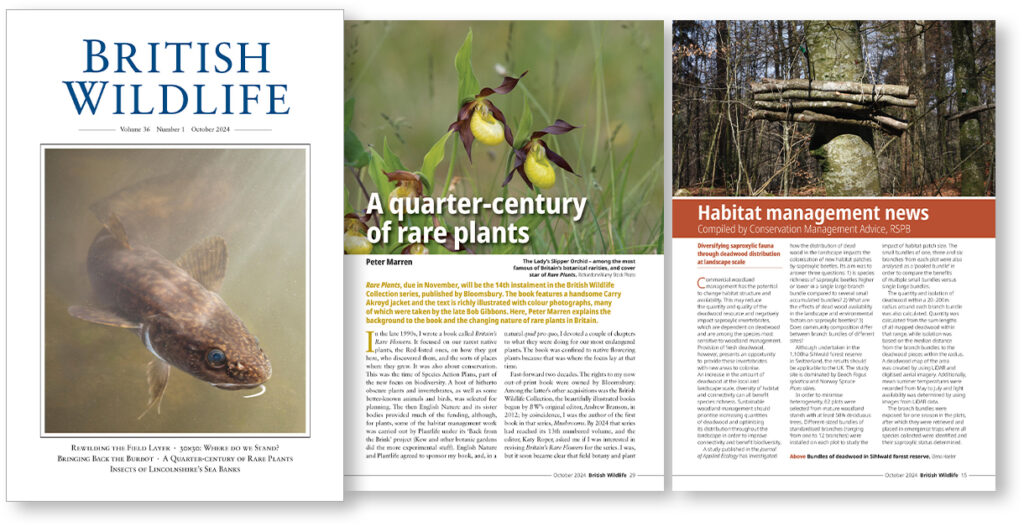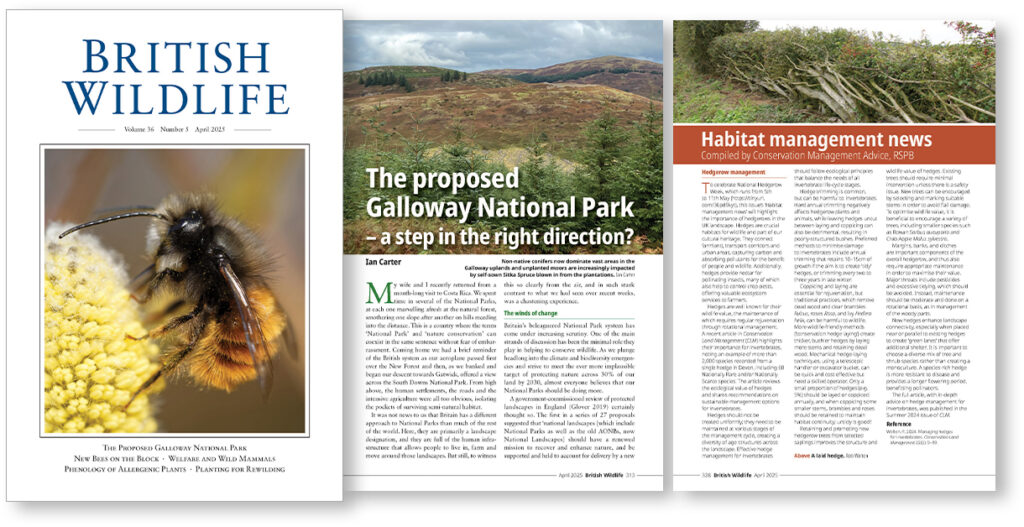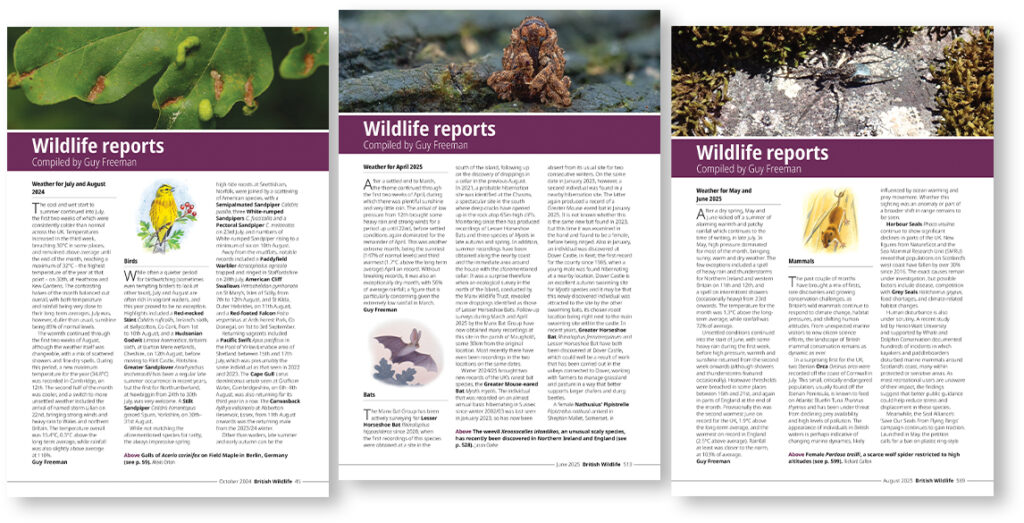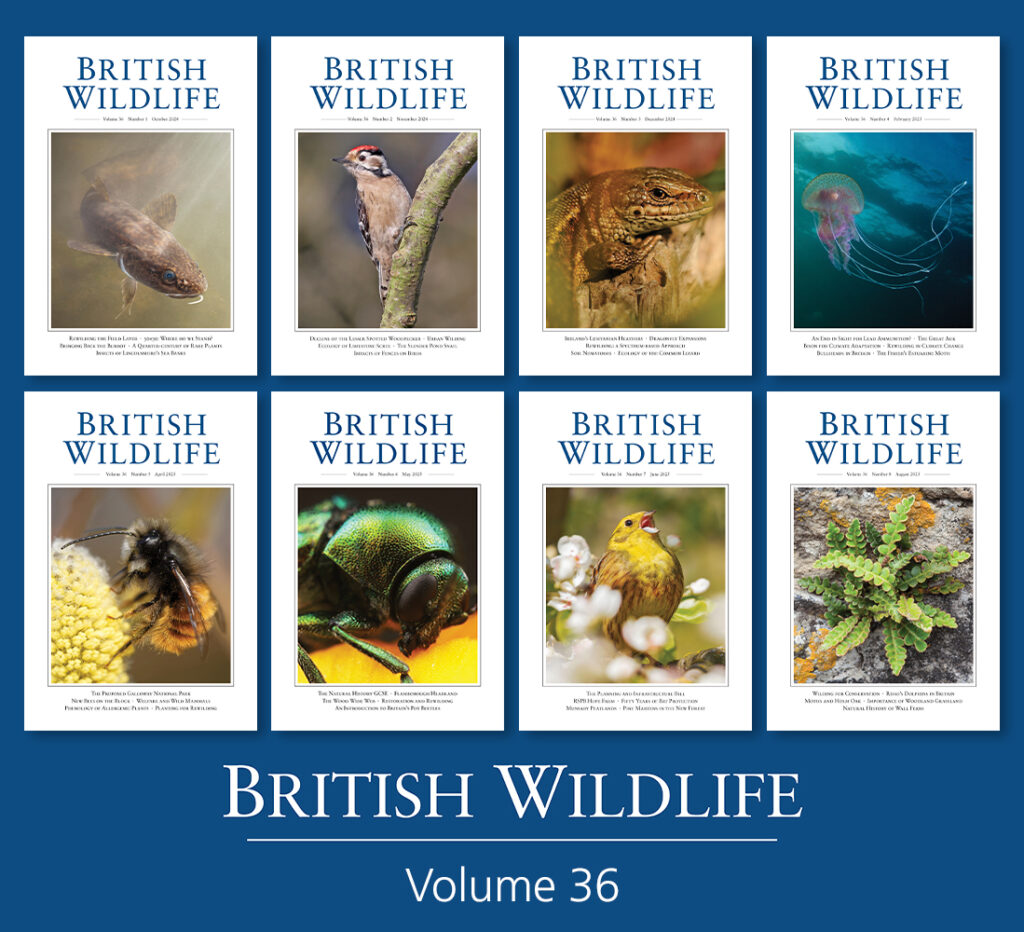British Wildlife: a look back over volume 36
As we conclude the 36th volume of British Wildlife, we look back on the last 12 months of coverage, commentaries and discoveries from the natural world. And, with a host of exciting articles and contributors lined up, we look forward to the year ahead.
The highlights below are just a recent sample of the natural history, conservation and policy matters we have covered. For much more, head to our 36-volume archive.

Volume 36 has spotlighted an eclectic mix of species from across the taxonomic spectrum, covering everything from the long extinct Great Auk and Britain’s forgotten Risso’s Dolphin to the fascinating and little thought of free-living, soil-dwelling nematodes. Botanical contributions have explored the history of Ireland’s Lusitanian heathers and the surprising lives of urban wall ferns, while our freshwater features have focused on Bullheads, Burbots and the Slender Pond Snails of Bavelaw Marsh. Meanwhile, we shared insights into invertebrates, the geographic expansions of dragonflies, new bee arrivals in Britain and the fascinating life histories of pot beetles and Fisher’s Estuarine Moth.
The volume has encompassed a particularly troubling year for nature as the foundations of environmental protection have become increasingly threatened. Recent articles on environmental policy included an assessment of the efforts needed to meet the 30×30 target (30% of land and sea protected for nature by 2030), a consideration of the impact of the Planning and Infrastructure Bill on nature, if passed in its current form, and an impassioned plea for the successful implementation of the long-campaigned for GCSE in natural history.

Our ‘Wilding for conservation’ series reached its conclusion this year and Volume 36 hosted an array of articles on subjects including when planting is appropriate for conservation, the differences and similarities between ‘rewilding’ and ‘restoration’, rewilding in a changing climate, efforts to depolarise rewilding in farming communities, urban rewilding in Northern England and much more.
Places featured span Britain, from the New Forest (and its potential role in securing a southern English Pine Marten population) to the Munsary Peatlands of the Flow Country in the north of Scotland. Other articles have focused on some of the serious conservation challenges that we face including the impact of fences on birds and the importance of woodland grassland. Environmental legislation pieces included an account of the painstaking battle to secure legal protection for bats in Britain and the failure of fragmentary and inconsistent legislation to offer protection to other wild mammals.

We have been very pleased to welcome a host of new speakers in our Changing Perspectives column. Contributors included Sophie Pavelle, Hannah Bourne-Taylor, Helen Scales, Nic Wilson and Stephen Moss.
As we commence volume 37, subscribers can look forward to another year of informative natural history, pragmatic analyses of our conservation challenges and responsive commentaries on all the changes in environmental polices. Through autumn and winter subjects will include the cultural and natural history of teasels, the Alpine Newt in Britain, the unique importance of ice age ponds, the latest twists and turns in the Planning and Infrastructure Bill and much more. And as ever, we are always glad to hear ideas for other topics or themes we could be covering, so if you have any suggestions or feedback please feel free to get in touch via info@britishwildlife.com.

